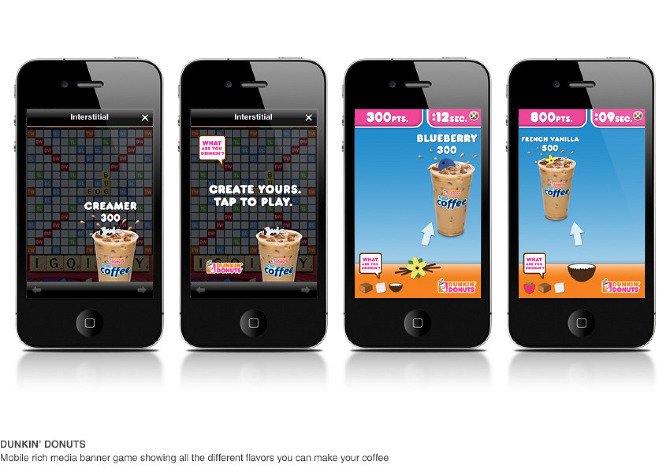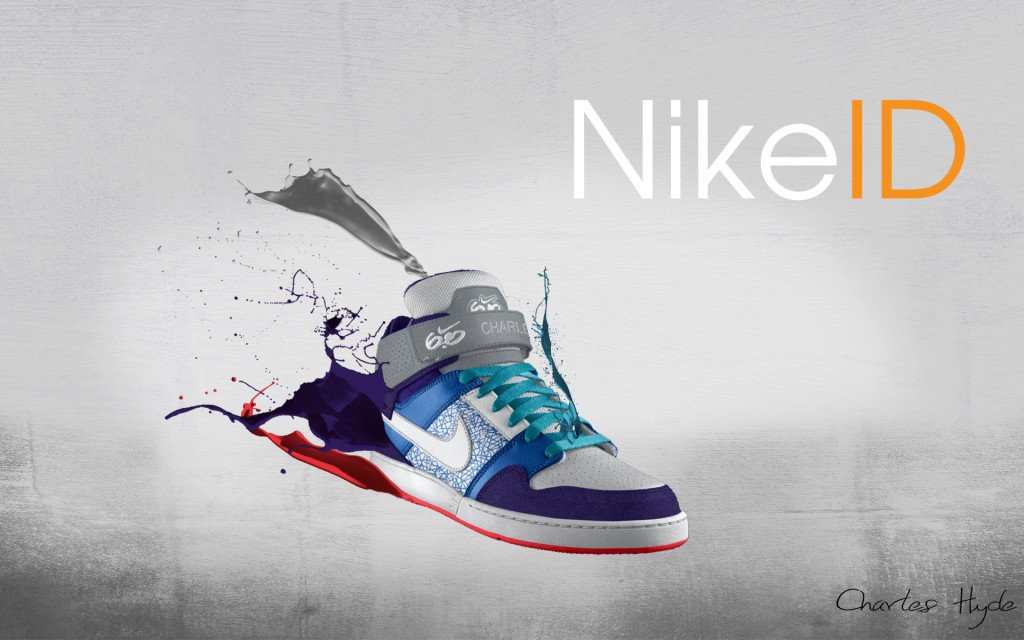As a student of sleight-of-hand magic, I value the number 52. Here we bring you 52 types of marketing strategies and tactics you can use to bring new customers to your business and grow your brand.
In order for businesses to win market share and stay relevant they need to consider many types of marketing strategies. Each marketing strategy can communicate to a target market the benefits and features of a product.
Marketing strategies can also communicate an overall value to their customers. In many cases, this is the core of building equity or good will in your target markets. Apple, for example, has invested in creating commercials for television, billboards, and magazines that showcase their products in such a way that their customers feel an affinity towards Apple’s products.
52 Types of Marketing Strategies In Use Today:
Cause Marketing
Finding a causes both your customers and your company cares about can create magic for your business. This requires internal knowledge about what your organisation cares about and who they want to help in the world. A good example of this is Toms Shoes. Instead of doing the traditional “buy one get one free” promotion, Toms built a strong customer following and reputation for giving back by giving away a free pair of shoes to someone in need for every shoe purchase made by their customers.
Close Range Marketing (CRM)
Use Wifi or bluetooth to send promotional messages of their products and services to their customers’ smartphones and tablets at close proximity. Close Range Marketing is also known as Proximity Marketing.

Relationship Marketing
Many companies focus on building relationships with their customers instead of always exclusive trying to sell them something (transactional marketing). Customers who love your brand more will also spend more money with your brand. Many traditional retailers have found this to be true. Walgreens has seen that customers who buy from all of their purchasing channels (store, web, mobile, etc) buy up to six times more than the average customer that only buys in their store.
Transactional Marketing
Driving sales can be challenging, especially for retailers that have to consistently sell products in high volume to consumers. In order to stay with the demands of investors, retailers have to encourage consumers to buy using coupons, discounts, liquidations, and sales events. High volume big-box retailers like Target are constantly running promotional events in order to get interested consumers into their stores.
Scarcity Marketing
In some markets it’s important to control how much product is available at one time. In many cases this is done because of the difficulty of acquiring raw materials or higher quality of the product. A company may choose to make their products accessible to only a few customers. Rolls-Royce’s release of their Chinese edition car called Phantom sold quickly. While the cost of the car was higher than most cars the scarcity drove the desire and the price.
Word of Mouth Marketing
Word-of-mouth Marketing is the passing of information from person to person by oral communication. Customers are very excited to share with the world the brands they love. Many consumers find meaning in sharing stories of their favorite products and services. Word of Mouth is one of the ancient ways people learned about what to purchase. Modern marketers have learned how to create authentic word of mouth for their companies and the products they represent.
Call to Action (CTA) Marketing
CTA Marketing refers to methods of converting web traffic into leads or sales on websites using text, graphics, or other elements of web design. Conversion strategies help improve the percentage of online visitors who become customers or who join the mailing list.
Viral Marketing
Cult Brand marketers are constantly creating new business ideas that keep their products in the heart and minds of the global consumer. Each time a new product is created, customers have to be given a reason to dream about their future purchase. Sometimes marketers of Cult Brands hit on something so great that people can’t help but share with others. Getting your customers talking about your products and services is very important to growing awareness for your business.
Diversity Marketing
Develop a customized marketing plan by analyzing different customer segments based on cultural differences including tastes, expectations, beliefs, world views, and specific needs.
Undercover Marketing
Sometimes not telling everyone everything can become a great source of buzz. Think of a movie trailer that got you very excited to go see the movie. While not showing all the aspects of the movie, the advertiser can create enough intrigue to drive viewers to want to see more.
Mass Marketing
Major corporations need to drive large numbers of purchasing of their products in order to survive and grow. While mass marketing may seem like a shotgun approach to marketing this is far from the truth. Big businesses spend big money in understanding big data–thats a lot of bigs!) This gives them an insight to where to place media for their potential national customers who buy their products and services. Walmart is an example of an effective mass market retailer. As the number one retailer in the world, they are very smart about their mass marketing efforts, often giving their customers a feeling of locality and warmth.
Seasonal Marketing
Seasonal events offers a great way to meet new consumers. Sometimes these events can be actual changes of weather or national holidays. For a retailer like Hallmark, Valentine’s Day represents a large portion of their business. By tuning into the various seasons that are important to your customers you can become more relevant in their lives.
PR Marketing
One of the most important marketing strategies is public relations. Many effective marketers work with the media to bring awareness to their products and the benefits their products offer. Also, in many cases where things go wrong, a good PR marketing strategy is vital. When Apple’s founder Steve Jobs was alive, Apple held a major press conference to announce every new product. This tradition is now continued by their new Apple CEO and CMO.
Online Marketing
As commerce has propagated to the Internet, a new form of marketing has emerged. From online banners to those annoying pop ups, online marketers have attempted to get their customers attention any way they can. Most online strategic marketing efforts today are a mix of growth hacking strategies ( A/B testing taken to the max) and a variety of awareness tactics that drive attention. A very effective online marketer is the insurance company Geico who simply asks their users to enter their zip code for an instant quote on a better savings.
Email Marketing
As soon as customers migrated into the online world, Internet marketers have attempted to collect and organize emails for potential prospects. Many business-to-business marketers depend on email marketing as a primary way to connect with customers. At industry tradeshows, IBM consultants can often be seen exchanging email information with their prospects.
Evangelism Marketing
Develop raving fan customers (what we call Brand Lovers) who become advocates of your brand or product, and who represent the brand as if it was part of their own identity.
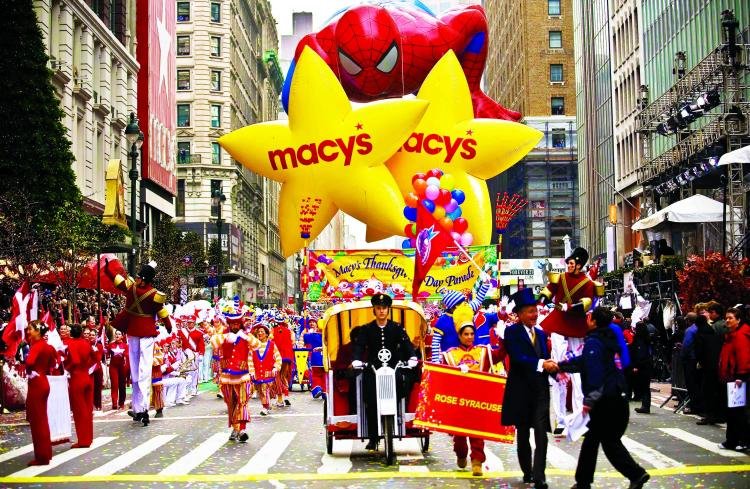
Event Marketing
Creating events is a great way to drive sales. Customers often need a reason to shop and events can often offer the perfect reason. Macy’s Thanksgiving Day Parade has become part of American culture by connecting two events together that consumers love: Thanksgiving and shopping.
Offline Marketing
With mass adoption of the Internet, many companies are finding new ways of integrating offline marketing with new technologies to create more engaging customer experiences. The Coca-Cola company has create vending machines that invite customers to hug them. This continues to tie the Coca-Cola brand to the core emotion of happiness, but also invite customers to experience the real product offline.
Outbound Marketing
Sometimes it’s important for companies to let their potential customers know they exist. By developing a list of prospects a company can begin to reach out to their individual target groups in order to find new customers. When Microsoft was selling their accounting software they often used outbound marketing to identify potential targets before trying to call the companies for an in-person meeting.

Direct Marketing
Communicate directly with customers and prospects through mail, email, texts, fliers and other promotional material.
Inbound Marketing
Companies often have customers calling them for various reasons. This can present a great opportunity to sell customers additional products and services they currently don’t have. When business customers call to check their balances, the business bank Chase often takes the opportunity to ask if they are interest in a credit line, a 401 k plan, or a variety of other services the bank offers.
Freebie Marketing
Promote free give aways or sell your products and services sold at low rates to boost the sales of other related products or services.

Newsletter Marketing
A fun way to promote a business is to write a newsletter that highlights some of the newsworthy things that have happened for the organization. The Motley Fool have been sharing their investment insights with their community for many years. These newsletters create a sense of inclusion and participation with their members and has provided a key driver for their incredible growth.
Article Marketing
In industries where expertise is highly valued, articles can offer a powerful tool to showcase your knowledge and expertise. Some innovations are shared in the form of articles or white papers where technical information needs to be convey to specialized buyers. Amazon.com has dedicated part of their site for white papers on technical know-how on cloud computing. This is a very sophisticated form of marketing for specialized buyers.
Content Marketing
Write and publish content to educate potential customers about your products and services. For the appropriate businesses, this can be an effective means of influencing them without using direct selling methods.

Tradeshow Marketing
Many products have to be experienced to be bought. There are very few customers that will buy a new automobile without doing a great deal of research and test-driving the car first. Tradeshows are industry gatherings where customers are invited to come sample all that the industry has to offer. To introduce their new lines of products, Ford Motor Company spends a great deal of time setting up and operating their booth at the international consumer auto shows each year. These auto trade shows give reporters and consumers a chance to experience cars first hand.
Search Marketing
These days, when consumers have questions they often don’t ask their friends; they go straight for Google. In fact, Google is so good at answering our questions that millions of people daily search for their answers on this leading Internet search site. One does not have to look far to see the power of search marketing. Google has shaped the industry for many years now and has helped hundred of retailers grow their businesses. While many businesses used to advertise in their local yellow pages, as less and less consumer consult their local physical directory, this channel becomes increasingly less effective each year.

Digital Marketing
Advertise and promote your products and services to customers using a range of digital devices including computers, smartphones, and tablets. Internet Marketing is an essential practice in Digital Marketing. Once a target market has been clearly identified, it is possible to work in conjunction with the USPS or a professional mail carrier that knows where your customers live. Direct marketing can be an effective way to reach consumers right where they live at home. While there is often a negative side to this approach (consumers don’t want to be bothered with a flurry of mail), many smart companies execute direct marketing well. Catalog retailer L.L. Bean, for example, created direct marketing programs that their customers looks forward to receiving.
Niche Marketing
Finding a niche and filling it could be described as the secret recipe for growth in over-crowded marketplaces. Take the shoe business, for example. There is a great demand for shoes in the world and so many top companies have evolved to satisfy most of the immediate shoe needs in the marketplace. The shoe space might seem crowded, but shoe manufacturing company Vans noticed an underserved customer: the skater. By focusing on this niche market Vans has developed a thriving business.
Drip Marketing
Drip marketing is a communication strategy that sends, or “drips,” a pre-written set of messages to customers or prospects over time. These messages often take the form of email marketing, although other media outlets can also be used as well.
Community Marketing
Engage an audience of existing customers in an active dialogue, speaking to the needs and wants of this particular customer group. Instead of focusing on generating the next transaction, community marketing promotes greater loyalty and higher levels of engagement within an existing brand community. Learn how to build brand communities here. Community marketing can also lead to word of mouth marketing.
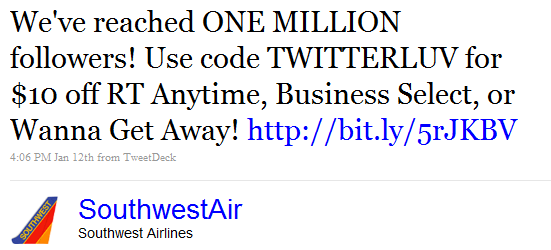
Social Media Marketing
Social media sites like Facebook and Twitter offer a unique opportunity for savvy businesses willing to invest in customer engagement. Social media marketing is still in its infancy but is growing up rather quickly. Companies like Southwest Airlines have departments of over 30 people whose primary responsibility is to actively engage with customers on social media.
Cross-Media Marketing
Provide customers information through multiple channels like email, physical mail, websites, and print and online advertisements to cross promote your products and services.
B2B Marketing
Business-to-business marketing is a marketing practice of individuals or organizations (including commercial businesses, governments, and other institutions). It allows businesses to sell products or services to other companies or organizations that in turn resell the same products or services, use them to augment their own products or services, or use them to support their internal operations. International Business Machines is a well known B2B marketer. IBM’s business has grown because taking a very intelligent approach at marketing their products to other business and governments around the world.
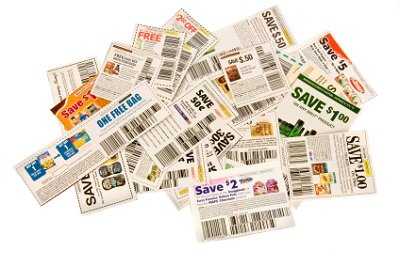
Promotional Marketing
Promotional marketing is a business marketing strategy designed to stimulate a customer to take action towards a buying decision. Promotional marketing is a technique that includes various incentives to buy, such as:
-
Contests: We all enjoy winning something for free. Contests offer an attractive marketing vehicle for small business to acquire new clients and create awareness.
-
Coupons: According to CMS, a leading coupon processing agent, marketers issued 302 billion coupons in 2007, a 6% increase over the previous year. Over 76% of the population use coupons, according to the Promotion Marketing Association (PMA) Coupon Council. Coupons still work and provide an affordable marketing strategy for small business.
-
Sampling: Try before you buy. Giving away product might appear profit-limiting, but consider how giving your customers a small taste can lead to a big purchase. Retail genius Publix supermarkets share samples of their award-winning key lime pie not because people question the goodness of the pie but to get their customers to buy more.
Ambush Marketing
Advertiser use this marketing strategy to associate with specific events and brands without paying sponsorship fees. This allows the business to capitalize on these events or leverage the brand equity of the other business, which has the potential effect of loweringthe value of the original event.
B2C Marketing
The ultimate goal of B2C marketing (business-to-consumer marketing) is to convert shoppers into buyers as aggressively and consistently as possible. B2C marketers employ merchandising activities like coupons, displays, store fronts (both real and online) and special offers to entice the target market to buy. B2C marketing campaigns are focused on a transaction, are shorter in duration, and need to capture the customer’s interest immediately. These campaigns often offer special deals, discounts, or vouchers that can be used both online and in the store.
Cloud Marketing
In this new form of marketing, all marketing resources and assets are brought online so customers (or affiliates) can develop, modify, use, and share them. Consider how Amazon.com gets customers to buy digital books, movies, and televisions shows in a digital library that is accessible in the customer’s online account or on their digital device like their Kindle Fire.
Mobile Marketing
Marketing on or with a mobile device, such as a smart phone. Mobile marketing can provide customers with time and location sensitive, personalized information that promotes goods, services, and ideas. Here is a recent example of mobile marketing in action.
Alliance Marketing
A joint venture is formed between two or more businesses to pool resources in an effort to promote and sell products and services.
Reverse Marketing
In reverse marketing, the idea is to get the customer to seek out the business rather than marketers seeking the customer. Usually, this is done through traditional means of advertising, such as television advertisements, print magazine advertisements, and online media. While traditional marketing mainly deals with the seller finding the right set of customers and targeting them, reverse marketing focuses on the customer approaching potential sellers who may be able to offer the desired product.
In 2004, Dove launched the Dove Campaign for Real Beauty focusing on the natural beauty of women rather than advertising their product. This campaign caused their sales to soar above $1 Billion and caused Dove to re-create their brand around this strategy. Although successful, this campaign caused a lot of controversy and discussion due to what people saw as an advertisement with a contradictory message.
Telemarketing
I know what you are thinking, you hate telemarketers. You are not alone in your feelings. However, telemarketing can play an important part of selling your products to consumers and it must not be overlooked as many companies rely on it to connect with customers. Telemarketing (sometimes known as inside sales, or telesales in the UK and Ireland) is a method of direct marketing in which a salesperson solicits prospective customers to buy products or services, either over the phone or through a subsequent face to face or Web conferencing appointment scheduled during the call. Telemarketing can also include recorded sales pitches programmed to be played over the phone via automatic dialing. Telemarketing has come under fire in recent years, being viewed as an annoyance by many.
Free Sample Marketing
Unlike Freebie Marketing, this is not dependent on complementary marketing, but rather consists of giving away a free sample of the product to influence the consumer to make the purchase.
Direct Mail Marketing
A channel-agnostic form of advertising that allows businesses and nonprofits organizations to communicate directly with the customer, with advertising techniques that can include text messaging, email, interactive consumer websites, online display ads, fliers, catalog distribution, promotional letters, and outdoor advertising. Direct marketing messages emphasize a focus on the customer, data, and accountability. Characteristics that distinguish direct marketing are:
-
Marketing messages are addressed directly to the customer(s). Direct marketing relies on being able to address the members of a target market. Addressability comes in a variety of forms including email addresses, mobile phone numbers, Web browser cookies, fax numbers, and postal addresses.
-
Direct marketing seeks to drive a specific “call to action.” For example, an advertisement may ask the prospect to call a free phone number or click on a link to a website.
-
Direct marketing emphasizes trackable, measurable responses from customers regardless of medium.
-
Direct marketing is practiced by businesses of all sizes—from the smallest start-up to the leaders in the Fortune 500. A well-executed direct advertising campaign can prove a positive return on investment by showing how many potential customers responded to a clear call-to-action. General advertising eschews calls-for-action in favor of messages that try to build prospects’ emotional awareness or engagement with a brand. Even well-designed general advertisements rarely can prove their impact on the organization’s bottom line.
Database Marketing
Database Marketing is a form of direct marketing using databases of customers or potential customers to generate personalized messages in order to promote a product or service for marketing purposes. The method of communication can be any addressable medium, as in direct marketing.The distinction between direct marketing and database marketing stems primarily from the attention paid to the analysis of data. Database marketing emphasizes the use of statistical techniques to develop models of customer behavior, which are then used to select customers for communications. As a consequence, database marketers also tend to be heavy users of data warehouses, because having a greater amount of data about customers increase the likelihood that a more accurate model can be built.
There are two main types of marketing databases: (1) consumer databases and (2) business databases. Consumer databases are primarily geared towards companies that sell to consumers, often abbreviated as [business-to-consumer] (B2C) or BtoC. Business marketing databases are often much more advanced in the information that they can provide. This is mainly because business databases aren’t restricted by the same privacy laws as consumer databases.
Personalized Marketing
Personalized marketing (also called personalization, and sometimes called one-to-one marketing) is an extreme form of product differentiation. Whereas product differentiation tries to differentiate a product from competing ones, personalization tries to make a unique product offering for each customer. Nike ID is a popular brand that has developed a strong business around this personalization marketing concept.
Affinity Marketing
Create strategic partnerships that are mutually beneficial by forming alliances with complementary brands. Also known as partnership marketing, with this strategy, one brands generates sales while the other creates new customers and builds brand awareness.
Cult-tural Marketing
The proposition of cult marketing holds reign upon the notion that a way to convert—ahem, excite … OK, convert—consumers is by using timeless human behavioral drives found in religious cults. Heck, fellow acolytes, nothing is more permission-, buzz- and one-to-one-based than “a central ideology with a parallel social universe rich with customs.” Cult marketing is a bright spot in the list of newfangled marketing templates, one that applies timeless social-science principles in a powerful way. To the list of newfangled marketing buzzwords, let’s add the term cult.
Humanistic Marketing
Human needs are “a state of felt deprivation.” They distinguish between physical needs (food, shelter, safety, clothing), social needs (belonging and affection), and individual needs (knowledge, self-expression). Needs are a relatively narrow set of non-cultural states of felt deprivation.
Guerrilla Marketing
Grass root, untraditional, and low-budget methods that found involve creativity, big crowds of people, and the element of surprise to market or promote a product, service, brand, event, or new launch.
Brand Lover Marketing
Brand Lover Marketing is a marketing concept that is intended to replace the idea of traditional brand marketing. Brands are running out of juice and Brand Lovers are what is needed to rescue brands. But what builds loyalty that goes beyond reason? What makes a truly great brand stand out? Brand Lovers bring brands to life. For a brand to elevate itself into the “Cult Brand” category, it has to give customers a feeling of belonging while generating strong feelings of love for its customers. Creating loyalty beyond reason requires emotional connections that generate the highest levels of love and a sense of belonging for your brand.
Contact us to discuss how you can better prepare for what’s ahead. We can help you identify ways for your organization to tap into the power of cult branding, create value, and ultimately thrust your performance.




